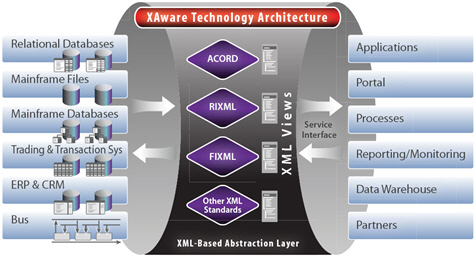XAware goes open source

XAware announced this week the release of its data integration product into open source. The company has also become a Gold Partner in the MySQL Enterprise Connection Alliance program. In what's becoming a standard operating procedure for split open source/commercial projects, the company has two web sites: xaware.org for the open source community and xaware.com for the commercial side.
Never heard of XAware? Before it became open source neither had I. Here's a diagram that shows part of what the software can do:

Essentially, XAware creates a data services layer that provides real-time access to all data, regardless of the source. Data is converted into reusable XML components that can be made available to many services, business processes and applications. These components can be dynamic or static. This lets users move beyond proprietary offerings (such as IBM, Oracle and others) or open source products that are limited to one sector of the data integration landscape (such as ETL). XAware gives users a comprehensive approach for all their data integration projects.
XAware has been around as a commercial product for a few years. According to a company spokesman, they made the decision to go open source because potential customers want to test-drive products before they put them into production. Open source will allow developers to easily download and use XAware. Some will be happy to use the free version, and some will see the value in paying for support/services.
XAware’s development environment is Eclipse-based and the runtime engine is built on the Spring Framework. The software is available for immediate download under the GPLv2 license. All the code is in Java and is available at SourceForge.